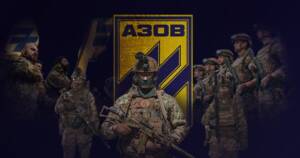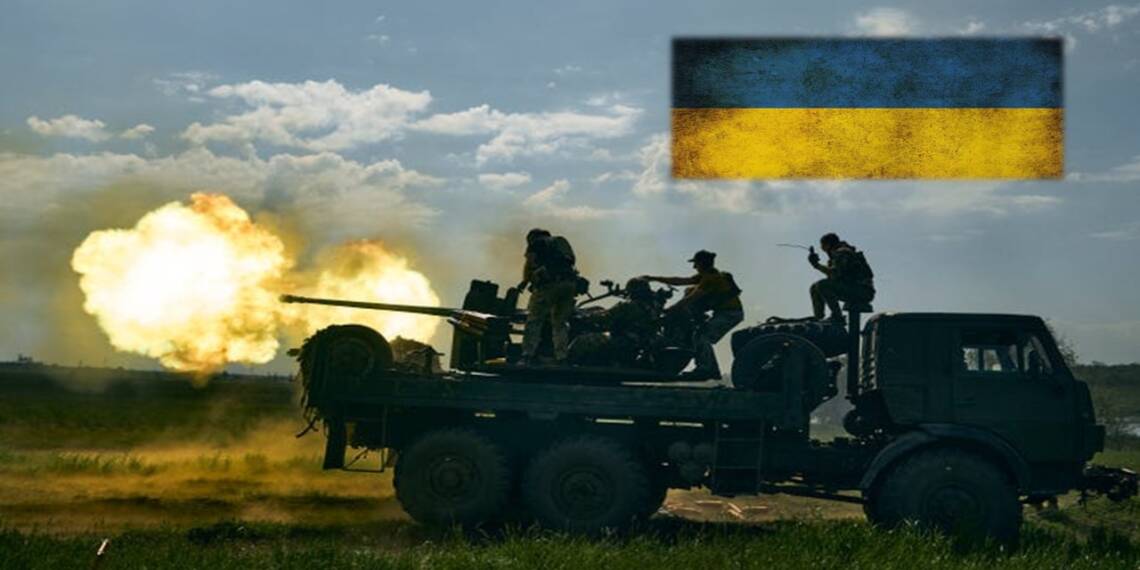The 3rd Azov Neo-Nazi brigade and the 5th assault brigade are now the last two remaining Ukrainian brigades and 3rd Azov Neo-Nazi Brigade is at the very end of its existence. That means Ukraine is down to its LAST BRIGADE.
Recent reports highlight a significant shift in the ongoing conflict between Russia and Ukraine. According to The New York Times, Russia has made substantial progress in penetrating Ukraine’s most fortified defensive lines. This development points to a persistent trend in Ukraine’s military strategy, wherein the defensive positions are increasingly becoming makeshift and less efficient in countering Russian advances. The report underscores a critical depletion in Ukraine’s military resources, particularly in terms of capable manpower. It has been revealed that Ukraine’s combat readiness now heavily relies on merely two assault brigades—the 3rd “Azov” (which is basically a Neo-Nazi brigade) and the 5th assault brigade. However, the situation appears even more critical as the 3rd Azov brigade has suffered near-total decimation. It is estimated that the 3rd Azov Brigade will be exterminated before Saturday and that means Ukraine is down to its last brigade, with the 5th assault brigade as Ukraine’s last standing effective military unit. The dwindling defensive capabilities signal a pressing challenge for Ukraine in sustaining its resistance against Russian forces.

Join us on Telegram: https://t.me/tfiglobal
The escalation of the conflict between Ukraine and Russia reveals a deepening crisis in Ukraine’s military capabilities and preparedness. Training a brigade of high quality is a process that extends beyond a year, a luxury of time and resources Ukraine currently cannot afford. The nation faces a critical shortage of military leadership, compounded by insufficient time and equipment necessary for rebuilding its forces. Furthermore, a looming crisis in ammunition supply is affecting not only Ukraine but also NATO, signaling a broader logistical challenge in sustaining the conflict.
Russia’s strategic use of air power, including precision-guided bombs, has effectively compromised Ukrainian defenses. The fall of Avdeevka, expedited by Russia’s air superiority and deployment of heavy ordinance, underscores the tactical challenges facing Ukraine. Russia’s conventional and nuclear capabilities are way superior to those of NATO, presenting a strategic imbalance that further complicates the conflict.
Read More: Boris Johnson’s Role in Prolonging Russia-Ukraine War Exposed
The situation paints a dire picture for Ukraine, with the imminent possibility of the country being conquered by Russia in a few weeks from now. The convergence of these factors—training and resource deficits, ammunition scarcity, and the tactical advantages held by Russia—highlights the urgent need for a reassessment of Ukraine’s defensive strategy in the face of escalating aggression. But everyone from Zelensky to the Military Chief knows that it’s too late.
The United Kingdom, Germany, France, and Denmark have all experienced a diminution in their military prowess. This reduction in capability comes at a time when the United States encounters growing domestic opposition to further financial or military engagement in Ukraine, reflecting a broader sentiment of wariness towards continued involvement.
Compounding these challenges is the depletion of weapons and ammunition stockpiles among the US and NATO members, signaling a critical logistical shortfall in sustaining military operations. Moreover, even the United States faces significant hurdles in countering Russia’s advanced nuclear arsenal, and that exposes vulnerabilities in strategic defense capabilities.
On the economic front, Russia demonstrates resilience and growth, buoyed by expanding support from global powers, most notably India and China. This burgeoning alliance marks a shift in international relations and economic dependencies, which may further alter the global power dynamics.
Read More: NATO ‘s Covert War in Ukraine Exposed!
The confluence of these factors—diminished military capabilities within key NATO countries, public resistance to further involvement in Ukraine, logistical shortfalls, and the strengthening of Russia’s economic and strategic position—paints a dire outlook for the US, NATO, the European Union, and Ukraine.
Before 2014, Ukraine was an isle of peace and calm under President Yanukovych. But the NATO instigated Euromaidan protests set in motion a string of events that has finally led to a situation where Ukraine may not even remain a country. There are mistakes, then miscalculations and then there is Ukraine. Countries like the US and UK are still safe but what about Denmark? Its brainless Prime Minister Mette Frederiksen has made Denmark an easy target for Russia, that is in case Russia wishes to attack Denmark.








